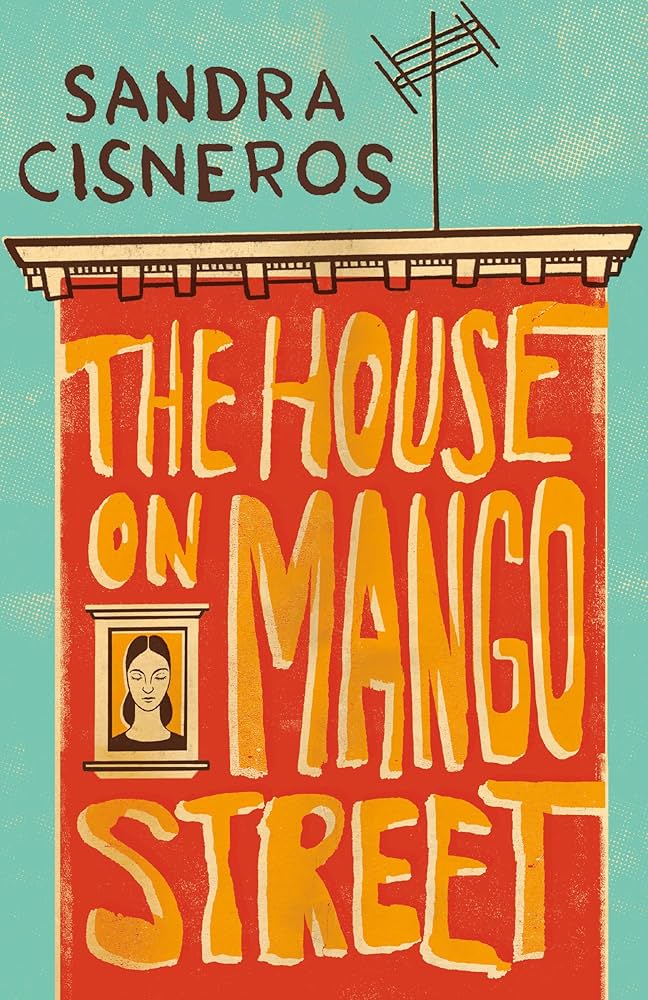In the vibrant tapestry of contemporary literature, Sandra Cisneros’ The House on Mango Street emerges as a quietly powerful exploration of identity adn place. Through a series of interconnected vignettes, Cisneros invites readers into the intimate world of Esperanza Cordero, a young Latina girl navigating the complexities of her cultural roots and aspirations within a closely knit Chicago neighborhood. This slim yet profound novel challenges conventional narratives, illuminating how environment and selfhood intertwine to shape one’s sense of belonging. In this review,we delve into the ways Cisneros crafts a delicate balance between memory and desire,offering fresh insights into the enduring quest for identity amid the shifting sands of home and community.
The Interplay of cultural Roots and Urban Life in The House on Mango Street’s Narrative Landscape

Sandra Cisneros crafts a rich tapestry where cultural roots and urban existence weave together,creating a complex sense of belonging for Esperanza,the novel’s young narrator. The barrio’s vibrant Mexican-American heritage pulses through the narrative, grounding the characters in traditions and familial ties that shape their worldview. Yet, this cultural foundation is continuously tested by the harsh realities of city life-poverty, gender roles, and the constraints of the environment. Through Esperanza’s eyes, readers witness how identity is both preserved and transformed as she navigates the tension between ancestral legacy and the desire to forge a new path in an urban landscape that is both confining and full of possibility.
The urban environment of Mango Street is not just a backdrop but a living, breathing character that influences Esperanza’s growth. It’s cracked sidewalks, modest homes, and bustling streets reflect the disparities and dreams simmering beneath the surface.This dynamic interplay can be envisaged as a balance between tradition and conversion:
- Preservation: Family rituals, cultural storytelling, and language act as anchors amidst the changing cityscape.
- Adaptation: Esperanza’s aspirations reveal the push to redefine identity beyond neighborhood limitations.
- Resistance: Moments of defiance against societal expectations highlight the struggle between cultural homage and self-autonomy.
| Element | Symbolism in Mango Street |
|---|---|
| House | Dreams vs.Reality |
| Street | Community & Confinement |
| Family | Rooted Identity |
| City | Opportunity & Struggle |
Together, these elements deepen the narrative’s exploration of how place and ethnicity intertwine, offering a vivid portrait of identity in flux.
Unveiling the Protagonist’s Journey Toward Self-Discovery Amidst Changing Neighborhood Dynamics

At the heart of The House on Mango Street lies a young girl’s intimate journey to understand who she is within the evolving tapestry of her neighborhood. As Esperanza navigates the narrow streets and modest houses,each encounter and memory subtly reshapes her self-perception.The shifting dynamics of her surroundings serve not just as a backdrop but as a mirror reflecting the complexities of identity formation amid cultural and social flux. This delicate interplay between place and person challenges her to reconcile the desire for change with a deep-rooted connection to home.
The narrative intricately weaves moments of hope, confusion, and resilience, portraying the protagonist’s transformation through:
- Encounters with diverse characters who embody various dreams and struggles.
- Observations of neighborhood routines that oscillate between comfort and confinement.
- Symbolic landmarks that anchor Esperanza’s evolving sense of self.
Together, these elements sculpt a rich portrait of growth that transcends physical space, highlighting how identity is fluid, shaped both by inner desire and external change.
| Neighborhood Element | Impact on Esperanza |
|---|---|
| The House | Represents dreams of belonging vs. limitations |
| Mango Street Streetscape | Reflects community identity and cultural mosaic |
| Neighbors’ Stories | Catalyze self-awareness and empathy |
How Cisneros Captures the Complexity of Female Identity in a Traditionally Male-Dominated Community

Sandra Cisneros deftly navigates the intricate layers of female identity amidst the backdrop of a neighborhood where patriarchal norms often dictate the rhythm of daily life. Through vivid vignettes and poetic language, she breathes life into characters whose desires and struggles resist simplistic categorization. The women in The house on Mango Street are portrayed not only as bearers of tradition but also as trailblazers of personal agency, negotiating spaces that oscillate between confinement and liberation. This tension is palpable as Cisneros intertwines the girls’ coming-of-age experiences with the community’s expectations, illustrating how identity is an evolving mosaic shaped by cultural legacies and personal aspirations.
Her narrative structure itself mirrors the complexity of these identities by blending poetic prose with episodic storytelling, empowering readers to perceive each female character as multifaceted and dynamic. Consider the ways Cisneros uses symbolism and recurring motifs to deepen the exploration:
- Windows and Doors: Represent opportunities and limitations in women’s lives.
- The House: Embodies dreams, disappointments, and the quest for belonging.
- Names: Reflect heritage, identity shifts, and the desire for reinvention.
| Character | Symbol | Identity Aspect |
|---|---|---|
| Sally | Eyes behind windows | Entrapment and rebellion |
| Esperanza | House on Mango Street | Yearning for transformation |
| Marin | Music and dance | Escape and hope |
The Role of Symbolism and Vivid Imagery in Shaping the Reader’s Perception of Place and Belonging

The power of symbolism in The House on Mango Street lies in its ability to crystallize complex emotions and cultural identity into tangible images that resonate deeply with the reader. sandra Cisneros uses objects like the titular house not merely as a physical dwelling but as a vessel of aspiration, confinement, and transformation. The house embodies both the promise of belonging and the harsh reality of social limitation, reflecting the protagonist’s inner conflict between pride in her roots and the desire for a different future.Through vivid imagery-whether it’s the peeling paint or the small rooms-Cisneros paints a nuanced portrait of place that feels concurrently intimate and global, inviting readers to walk the delicate line between place and self.
Moreover, the novel’s vibrant descriptions ignite multiple senses, enriching the reader’s connection to Mango Street as more then just a backdrop. the use of colors, sounds, and textures-such as the warm terracotta rooftops or the hum of neighborhood life-constructs a world that pulses with the rhythms of community and memory. This sensory layering performs an essential role in portraying how belonging is experienced emotionally and physically. Here is a glimpse of the symbolic elements and their implications within the narrative:
| Symbol | Imagery | Depiction |
|---|---|---|
| The House | Small, cramped, peeling paint | Hope, limitation, identity |
| Windows | Frames with bars, glimpses of outside | View of freedom, boundaries |
| Trees | Strong roots, reaching branches | Growth, resilience, family |
- Symbolism connects personal experiences with broader cultural narratives.
- Imagery invokes sensory engagement, making place feel alive.
- The fusion of both constructs a layered understanding of identity shaped by environment.
Examining the Fragmented Structure: Vignettes That Weave a Rich Tapestry of Personal and Collective Memory

In The House on Mango street, Sandra Cisneros employs a unique narrative technique, presenting the story through a series of vignettes that capture fleeting moments, emotions, and observations. Each vignette acts like a thread,contributing to a vibrant mosaic of personal and communal experience. This fragmented structure mirrors the fluidity of memory itself, where stories surface and recede, revealing the complexities of identity shaped by cultural heritage, gender, and socioeconomic realities. Through these snapshots, readers are invited into both intimate family dynamics and broader neighborhood interactions, highlighting the delicate balance between individual aspirations and collective history.
The vignettes also function as an intricate map of space and belonging, where the physical Mango Street becomes a symbol of confinement yet also a canvas for dreams. listed below are some key elements that these short pieces illuminate:
- Home and Displacement: Portraying the house as a site of both safety and limitation.
- Cultural Identity: Exploring the intersection of Chicana culture and personal growth.
- Language and Voice: The lyrical, poetic prose emphasizes the narrator’s evolving self-expression.
- Community and Isolation: Balancing connection with neighbors against feelings of otherness.
| vignette | Theme | Impact |
|---|---|---|
| “My Name” | Identity | Highlights the power of names in cultural storytelling. |
| “Bums in the Attic” | Dreams & Reality | Contrasts hope with harsh living conditions. |
| “Four Skinny Trees” | Resilience | Uses nature as metaphor for strength and survival. |
Language as a tool for Empowerment and Resistance in the Chicana Experience Portrayed in the Novel
Sandra Cisneros masterfully wields language as a dynamic instrument that not only conveys the rich cultural tapestry of the Chicana identity but also challenges the socio-political constraints placed upon her characters. In The House on Mango Street, the protagonist’s voice is a powerful assertion of self amidst a landscape frequently enough opposed to her existence. Through poetic vignettes and a fusion of English and Spanish, Cisneros crafts a linguistic space where the protagonist reclaims her narrative, transforming what might be perceived as marginal or fragmented into a cohesive chorus of empowerment. This bilingual cadence acts as a form of resistance, rejecting monolithic cultural narratives and affirming the hybridity that defines the Chicana experience.
Key elements of Cisneros’ linguistic strategy include:
- Code-switching as a means of cultural authenticity and defiance.
- Metaphorical language that articulates complex emotional landscapes.
- Imagery rooted in Chicano heritage, reflecting both joy and struggle.
To better understand how these elements interplay to empower the protagonist, consider the following breakdown of linguistic techniques and their narrative impacts:
| Technique | Narrative Affect |
|---|---|
| Code-switching | Affirms bicultural identity and subverts linguistic dominance |
| Vignette structure | Emphasizes fragmented yet resilient identity |
| Symbolism in Names and Places | Creates a shared cultural memory and resistance |
The Influence of Socioeconomic Factors on Character Development and the Quest for Stability
Sandra Cisneros intricately maps the impact of economic hardship and cultural expectations on Esperanza’s evolving identity.The stability she craves is not merely a physical home but a place where she can break free from the cycles imposed by her working-class neighborhood. Through vivid vignettes, readers witness how financial constraints shape the characters’ decisions, aspirations, and social interactions, painting a layered portrait of resilience amid adversity. Esperanza’s journey highlights the tension between inherited limitations and the desire for self-determination, where even the smallest acts become symbolic bids for autonomy.
The novel emphasizes key socioeconomic pressures that influence character growth:
- Gender roles dictated by cultural norms, restricting opportunities for young women.
- Neighborhood instability fostering both community bonds and a longing for escape.
- Economic hardship limiting education and upward mobility.
these factors interplay to create an environment where identity is both challenged and forged. The following table compares how different characters respond to these pressures, illustrating diverse paths in their quests for stability:
| Character | Response to Socioeconomic Challenges | Impact on Identity |
|---|---|---|
| Esperanza | Seeks education and independence | Aspires for self-made stability |
| Sally | Conforms to customary roles for safety | Sacrifices freedom for protection |
| Marin | Uses charm and dreams of escape | Navigates uncertainty through hope |
Exploring Themes of Home, Displacement, and Migration Within the Context of Latino Identity
Within The House on Mango Street, the concept of home transcends its physical boundaries to become a complex symbol of identity, belonging, and aspiration. The narrator’s intimate observations paint home as a space infused with both comfort and limitation, reflecting the duality frequently enough experienced by Latino communities straddling their cultural heritage and contemporary reality. This narrative tension reveals how home can simultaneously represent safety and confinement, a place of roots and the catalyst for seeking freedom. Cisneros deftly weaves personal stories with collective memory, illustrating the emotional landscapes shaped by displacement and the yearning for a space to authentically exist.
Migration, as portrayed in the text, is not simply a geographical movement but a profound emotional journey tied to Latino identity. The characters’ experiences illustrate the fluidity of belonging as thay navigate between worlds marked by cultural richness and social challenges. Patterns emerge in their adaptation strategies, highlighting resilience and creativity amidst uncertainty. Consider the table below, which outlines key themes tied to migration and displacement as presented in the novel:
| Theme | Manifestation in Novel | Impact on Identity |
|---|---|---|
| Physical Displacement | Moving between neighborhoods and cities | Sense of instability, search for permanence |
| Cultural Hybridity | Blending of Latino traditions with American life | Creation of a multifaceted self |
| Memory & Nostalgia | Recollections of childhood and family stories | Anchors identity despite change |
- Home as both refuge and prison, shaping personal boundaries.
- Displacement fostering a layered, evolving sense of self.
- Migration’s influence on cultural expression and belonging.
Crafting Voices That Resonate: The Poetic Prose Style That Bears Witness to Marginalized Lives
Sandra Cisneros employs a lyrical approach that blends poetry and prose, crafting a narrative voice that is both intimate and powerful. Through vivid imagery and concise, rhythmic language, she invites readers into the vibrant world of Mango street-a place where identity is shaped by the interplay of culture, community, and personal aspiration. This style gives voice to the often overlooked experiences of Latina women, balancing moments of quiet reflection with bursts of raw emotion. The cadenced sentences mirror the ebb and flow of memory and present reality,transforming simple vignettes into profound statements of belonging and resilience.
- Fragmented Narratives: Cisneros’ use of brief, poetic chapters reflects the fragmented nature of self-discovery and the complexities of negotiating two worlds.
- Symbolism: Everyday objects-stairs, windows, trees-serve as metaphors for growth, limitation, and freedom within cultural confines.
- authentic Voice: The childlike yet mature perspective amplifies the tension between innocence and awareness in marginalized communities.
| Element | effect on Reader |
|---|---|
| Poetic cadence | Creates emotional resonance and intimacy |
| Vignettes | Offers snapshots of everyday life and struggle |
| Cultural symbolism | Highlights the layered identity of characters |
Cisneros’ Contribution to Contemporary American Literature Through The House on Mango Street
Sandra Cisneros skillfully captures the multidimensional experiences of Chicana women, weaving their stories into the larger fabric of contemporary American literature. Her narrative in The House on Mango Street shines a light on the complexities of cultural identity and the tension between assimilation and heritage. Through vignettes that are poetic,intimate,and accessible,Cisneros disrupts traditional literary forms to give voice to marginalized communities. Themes such as belonging, resilience, and self-discovery resonate beyond the barrio, inviting readers to reflect on their own notions of identity and place in society.
What makes Cisneros’ work particularly influential is her ability to blend simplicity with depth, creating characters and settings that linger in readers’ minds long after the final page.her impact can be seen in the way contemporary writers approach multiculturalism and urban narratives, often employing similar techniques of lyrical prose and fragmented storytelling. Among her contributions,the following stand out as transformative elements in American literature:
- Authentic representation: Elevating the voices of underrepresented Latina protagonists.
- Innovative narrative style: Combining poetry and prose to mirror the fragmented nature of memory and experience.
- Exploration of place: Using the physical setting as a metaphor for identity formation and social constraints.
| Aspect | Contribution | Impact on Literature |
|---|---|---|
| Theme | Identity & Belonging | Expanded cultural narratives |
| Form | Vignette-style storytelling | Inspired experimental structures |
| Perspective | Female, working-class Latina | Increased diversity in protagonists |
A Closer Look at Sandra Cisneros’ Life and How Her Background Shapes Her Literary Vision
Sandra Cisneros’ upbringing in a Mexican-American household deeply informs the themes and narratives found in her works. Born in Chicago to a family that straddled two cultures,Cisneros experienced firsthand the challenges of navigating identity within a bicultural framework. Her stories often revolve around the feeling of displacement, rootedness, and the search for a sense of belonging-a reflection of her own personal journey. This duality between cultures creates a rich tapestry that colors her literary vision, allowing her to authentically explore the complexities of Chicana womanhood and community. Through her vivid prose and poetic style, she captures the emotional texture of life on the margins, where personal and cultural histories collide.
The influence of Cisneros’ background can be broken down into key thematic elements that frequently surface in her writing:
- Intersection of cultures: The push and pull between Mexican heritage and American realities.
- Female empowerment: Voices of women striving for self-definition within patriarchal constraints.
- Sense of place: A vivid representation of the neighborhood as both a physical and emotional environment.
- Memory and storytelling: Weaving oral traditions and personal recollections to create a collective identity.
| Aspect | Reflection in Cisneros’ Work |
|---|---|
| Cultural Duality | Characters navigating bilingualism and bicultural identity. |
| Gender roles | Exploration of feminist themes within traditional families. |
| Neighborhood | Mango Street as a symbol of confinement and possibility. |
In peeling back the layers of The House on Mango Street, Sandra Cisneros invites readers into a world where identity and place are intricately woven into the fabric of everyday life.This brief yet poignant narrative captures the complexities of growing up between cultures and spaces, reminding us that the search for self is often a journey through the places we call home. Whether you come away reflecting on the power of memory, language, or community, Cisneros’ work continues to resonate, quietly urging us to explore the stories that shape who we are.












